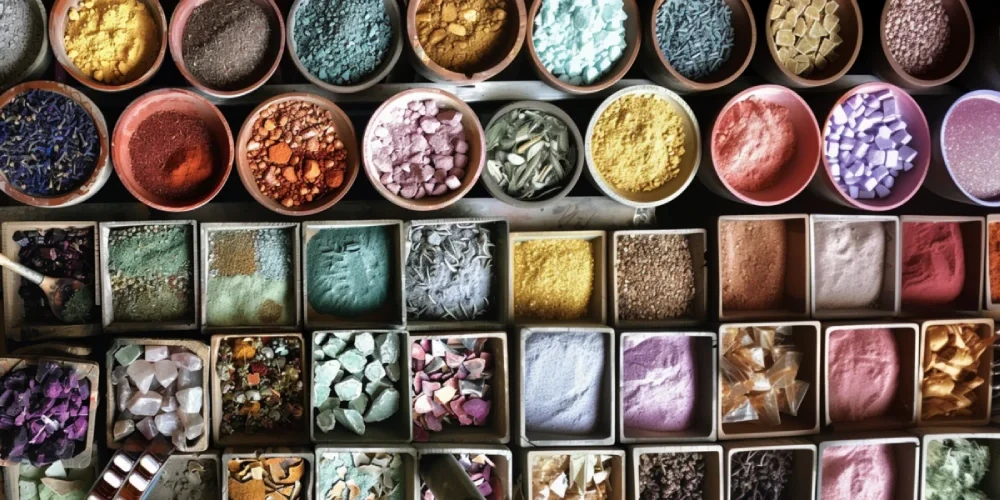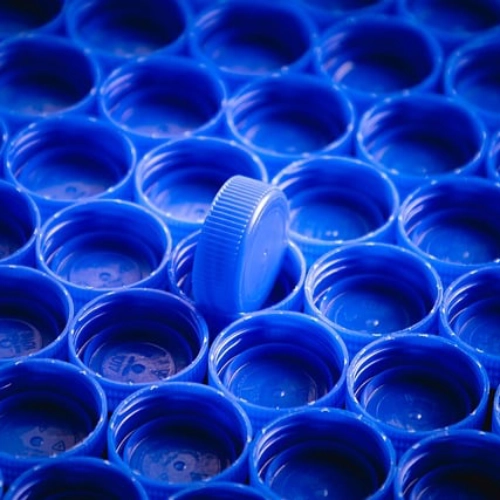
Organic pigments or inorganic pigments? Choice Guide
When we want to make a cake, we first need to make a list of the ingredients. It would be a disaster to start kneading the mixture and realize only during the process that we have forgotten an essential element for the recipe. Even worse, if we discover that what we need is missing from our house. We could then try to replace it with another ingredient, but the result would still be uncertain, with the risk of wasting precious time and making a mess.. The world of plastic coloring works just like baking: before starting to work on a project, we need to make sure we have all the ingredients and that they are suitable to combine with each other. In fact, not all pigments are the same. The use of organic pigments or inorganic pigments can give a very different result depending on the polymer with which they amalgamate and the final product to be created.
Are organic pigments natural?
Before starting, it's important to clarify a topic that often causes confusion. Defining a pigment as organic or inorganic has nothing to do with the distinction between natural and synthetic pigments. The doubt arises from the fact that the term "organic" is often erroneously used as a synonym for "natural," but this is not the case. In fact, both organic pigments and inorganic pigments can be extracted from natural sources products or artificially synthesized in the laboratory. Actually, because of an economic reason, it is often the organic pigments that are made in lab, as natural materials come from limited sources and are often at the center of ethical debates.

Difference between organic pigments and inorganic pigments
The main difference between organic pigments and inorganic pigments lies in the presence of carbon atoms within the molecules that compose them. Organic pigments were historically extracted from living matter which is, indeed, composed of carbon (yes, that's right, even people contain carbon). Plant roots and tree barks, flowers, shells, animal derivatives such as cephalopod ink and Tyrian purple contain valuable coloring elements. In contrast, inorganic pigments originated in minerals, such as rocks, limestone, loam, metals. Just think of the red of iron oxide or the blue of lapis lazuli. In the modern economy, however, things have changed somewhat. As mentioned, mainly of economic and ethical reason, there is a tendency to synthesize all these pigments directly in the laboratory, especially with regard to organic pigments.
Organic pigments or inorganic pigments? Which ones to choose for your plastic
Of course, the different composition of the molecules in an organic compared to an inorganic element also results in different properties. On one hand, organic pigments are brighter and can be dosed in smaller quantities, but they are also more susceptible to exposure to weather and light. In contrast, inorganic pigments are less vivid, but have better resistance to light, water and heat. Resistances to high temperatures are also different, with organic pigments with greater risk of "burning ". In addition to this, the phenomenon of color migration is significantly lower in inorganic pigments, unlike organic pigments which have a tendency to migrate. For these reasons, it is very important to understand the properties of the pigments you want to use in your product, in order to properly meet the needs of the final application market.

Incompatibility: the case of warpage
The compatibility between the chemistry of a pigment and the chemistry of a specific polymer is never guaranteed and can vary even with the percentage of dosage. Working with materials science means considering all variables from the very beginning of an item's design, because even a minor variation could result in unforeseen reactions. For example, organic pigments such as blue phthalocyanines, can alter the degree of crystallization of the plastic causing a phenomenon known as warpage, which involves distortion and crack formation as the molded product cools. Thus, it can happen that you mold a piece in various colors and everything seems to be fine. Then, when it comes to the blue color, the plastic is warped and you have to rack your brains to solve the problem, losing a lot of time in production.
Pigment leveling and other solutions
In reality, a solution exists to (almost) everything. Although organic pigments have a significant impact on the behavior of polymer crystallization, causing issues such as warpage, the positive effects of a nucleating agent can compensate for the distortion, equalizing the behavior of colored plastics. This phenomenon, known as "pigment leveling ", is an allied solution against deformation and stress cracking. This can speed up the industrial process, reducing the need for continuous machinery adjustments and the production of waste. Regarding the formulation of a stable color that is both bright and resistant to UV rays, it is not entirely impossible. A masterbatch suited to the request can be produced in the laboratory by creating the right mix of organic and inorganic pigments, perhaps with the addition of some special and specific additives. In the end, with colors, whoever can be more creative wins, even in finding solutions.

Organic pigments or inorganic pigments? That is the question!
Do you have a product design project in mind or want to create a plastic item, but still have some doubts about the best pigments to use? Don't worry, we'll help you! Our color technicians will help you study a formula that fits your process.